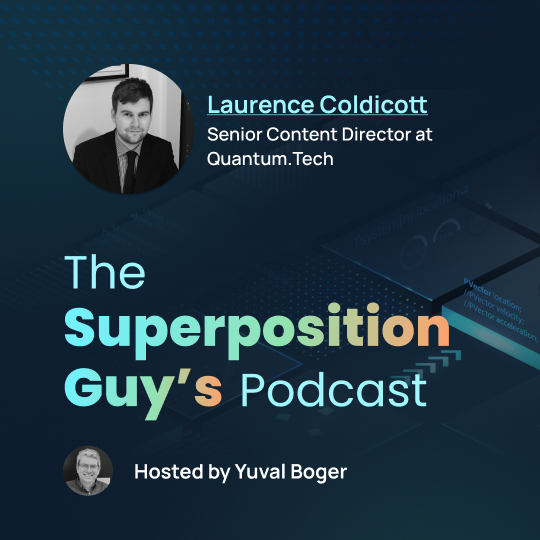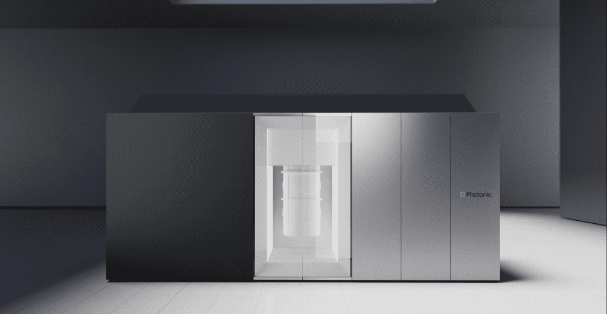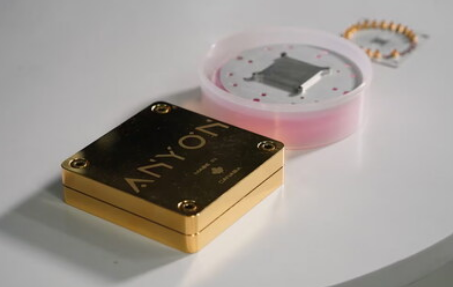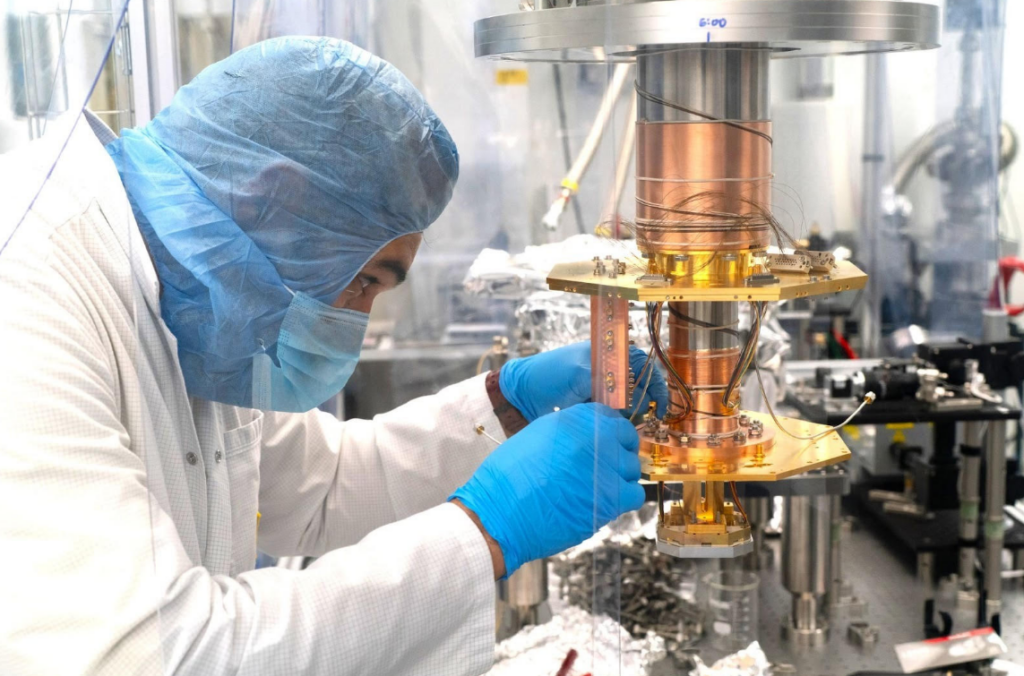Insider Brief
- A Cornell University study proposes a new method—quantum computational sensing (QCS)—that uses quantum computers to process sensor signals directly, improving speed and accuracy over traditional approaches.
- Simulations showed that even a single qubit could outperform conventional sensors in classifying magnetic patterns and brainwave signals, with up to 26 percentage points better accuracy.
- While the results are based on simulations, the researchers highlight future potential for real-world applications in areas such as neuroimaging, radar, and embedded sensing where data is sparse or noisy.
In the quantum world, computing and sensing are often treated as separate fields within the broader quantum technology landscape. That may change, according to a study from Cornell University that investigates how quantum computers can be used not just to process information, but to process signals from quantum sensors more intelligently.
The quantum-on-quantum combo may be able to achieve faster, more accurate results for real-world detection and classification tasks. The work also shows that small-scale quantum computers can give a performance boost to quantum sensors by running computations on the signal before measurement, saving time and increasing accuracy in everything from brainwave analysis to radar detection.
The team’s findings, published in the pre-print server arXiv, come at a time of growing interest in the practical benefits of quantum technologies, as researchers push beyond basic experiments to demonstrate how quantum systems can outperform conventional tools for specific tasks.

The Cornell team’s approach — called quantum computational sensing (QCS) — enables a quantum device to carry out sensing and computing operations at the same time. While quantum sensors typically gather raw data for classical post-processing, this method pushes part of the computation into the quantum system itself. That shift allows for more efficient use of limited measurement time and reduces errors that creep in due to quantum noise.
In the paper, the researchers describe how quantum computers can run learning-based algorithms to transform the way sensor data is handled. Their simulations show that even a single qubit — the quantum equivalent of a classical information bit — can outperform traditional sensors on some tasks when used in this integrated way.
Across a range of classification challenges, including distinguishing between different magnetic field patterns and analyzing brainwave signals, the quantum computational sensors demonstrated up to 26 percentage points better accuracy than conventional sensors operating with the same time or energy budget.
A Smarter Kind of Sensing
Typical quantum sensors detect signals — such as electric fields or magnetic pulses — by encoding them into quantum states, which are then measured. But the Cornell team’s method takes inspiration from recent quantum computing strategies. Instead of a one-shot sensing event followed by classical analysis, the signal is sensed multiple times, with quantum computations inserted between these sensing steps. These computations act like filters or transformations that let the quantum system amplify or refine the signal before the final measurement is taken.
This technique is conceptually similar to signal processing in classical systems, where a stream of data is cleaned, transformed, or compressed before being interpreted. But here, the filtering happens on the quantum level and can be learned via a form of supervised training.
Using approaches borrowed from quantum signal processing and quantum neural networks, the team trained their circuits to perform tasks such as binary classification (e.g., detecting which of two categories a signal belongs to) and multi-class classification, as well as estimating nonlinear functions directly from sensor readings.
The circuits can be optimized using training data, and crucially, the researchers showed that even with as few as one measurement shot, their method could deliver useful results, which the researchers consider a significant benefit in quantum systems where measurements are slow and noisy.
Beyond Qubits
The study doesn’t stop with qubit-based sensors. The researchers also tested architectures that combine qubits with bosonic modes, which represent systems like optical or microwave resonators. These hybrid platforms allow richer signal encoding and could lead to more flexible quantum sensors in practice.
In one example, the team used these hybrid sensors to estimate nonlinear functions of incoming signals — an operation that would normally require complex classical postprocessing. Here, the quantum system handled the computation internally, thanks to a carefully engineered Hamiltonian — the energy function governing the system’s behavior.
These Hamiltonians enabled the sensor to directly output values that approximated complicated mathematical expressions, such as polynomials of signal strength, without needing to first reconstruct the full signal.
Testing Real Data
To test their methods on meaningful data, the researchers used a dataset from magnetoencephalography (MEG), a technique used to measure the brain’s magnetic fields. In a a realistic test of noisy, time-varying signals, they simulated how their quantum sensors would classify spatiotemporal patterns associated with different hand movements.
Even in this complex case, the quantum computational sensors outperformed standard sensors, especially when the sensor architecture could coherently track spatial and temporal correlations across multiple input channels. According to the study, this suggests that quantum computational sensing could find future applications in neuroimaging or brain-computer interfaces, especially where data is sparse or signals are weak.
Limitations and Future Directions
The Cornell team emphasizes that these results are based on simulations, not yet on physical hardware. Quantum sensors and quantum processors are still evolving, and maintaining coherence across sensing and computation steps remains technically challenging. Still, the fact that the methods work with few qubits and limited measurements raises the possibility of near-term demonstrations.
Another challenge is training: while the study shows that supervised learning works even with noisy quantum outputs, designing and optimizing these training schemes for real-world use remains a complex task.
Also, the tasks where QCS shows advantages are specific and tailored — such as classification or function approximation — rather than general-purpose sensing. Whether these advantages carry over to broader categories of measurement remains to be tested.
The authors propose several directions for future work, including experimental tests on existing superconducting or photonic quantum devices. They also point to the potential for QCS to be useful in time-sensitive or resource-limited sensing applications — for example, drone-based radar systems, space-based sensors, or embedded quantum sensing in biomedical devices.
According to the study, the researchers suggest that the best use cases may not be the biggest systems but the smartest ones. In particular, integrating lightweight quantum processors with specific sensing tasks may offer outsized benefits even when full-scale quantum computers are not yet available.
For a deeper, more technical dive, please review the paper on arXiv. It’s important to note that arXiv is a pre-print server, which allows researchers to receive quick feedback on their work. However, it is not — nor is this article — considered official peer-review publications. Peer-review is an important step in the scientific process to verify the work.
The research team includes Saeed A. Khan and Sridhar Prabhu, Logan G. Wright and Peter L. McMahon.


















